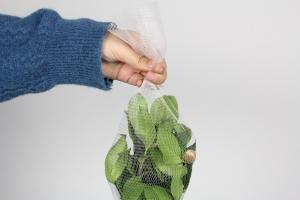Introduction
Milkweed plant, also known as Asclepias, is a fascinating and versatile plant that belongs to the Apocynaceae family. Its unique features have made it a favorite of gardeners, nature enthusiasts, and wildlife lovers alike. This article will explore the various aspects of the milkweed plant, from its history to its uses.
Origins of Milkweed Plant
The milkweed plant is native to North America, where it grows wild in fields, meadows, and along roadsides. It has a long history of use as a medicinal plant by Native Americans, who used it to treat a variety of ailments, such as respiratory problems, skin infections, and fevers.
Features of Milkweed Plant
One of the most distinctive features of the milkweed plant is its milky sap, which contains latex-like compounds that are toxic to most animals, including humans. The leaves of the plant are large and smooth, with a pointed tip and a distinctive vein pattern. The flowers of the milkweed plant are some of the most beautiful and unique in the plant kingdom, with a complex structure that has evolved to attract specific pollinators.
Uses of Milkweed Plant
Apart from its traditional medicinal uses, the milkweed plant has many other uses. Its fibers can be harvested to make cordage, paper, and even clothing. The seeds of the plant are a food source for many animals, including birds and insects, and are also a traditional food source for people. The plant is also popular with gardeners, as it attracts a variety of beneficial insects, such as butterflies and bees.
Conservation of Milkweed Plant
Despite its many benefits, the milkweed plant has suffered from habitat loss due to industrial agriculture and urban development. This has had a significant impact on the monarch butterfly, which relies on the milkweed plant for its survival. The loss of milkweed plant habitats has contributed to a decline in monarch butterfly populations, which has led to initiatives to restore milkweed plant populations across North America.
Conclusion
In conclusion, the milkweed plant is a unique and valuable plant that has played an important role in the history and culture of North America. Its distinctive features and many uses make it a fascinating subject for study and appreciation. As we work to conserve and restore the milkweed plant, we not only ensure the survival of this iconic plant, but also help to preserve the rich biodiversity of our natural world.

 how many times do yo...
how many times do yo... how many planted tre...
how many planted tre... how many pine trees ...
how many pine trees ... how many pecan trees...
how many pecan trees... how many plants comp...
how many plants comp... how many plants can ...
how many plants can ... how many plants and ...
how many plants and ... how many pepper plan...
how many pepper plan...































